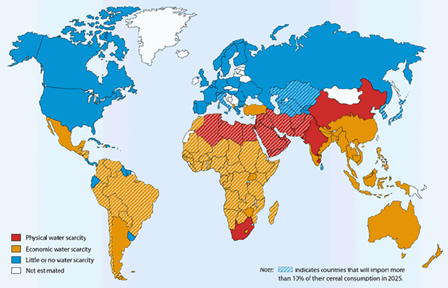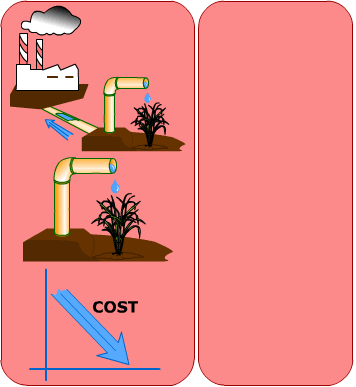![]() Explain the different causes and types of water scarcity scenarios in irrigated rice areas
Explain the different causes and types of water scarcity scenarios in irrigated rice areas

There are two types of water scarcity:
- Physical water scarcity – there is less water available
- Economic water scarcity – there may be plenty of water available but it is relatively expensive. The user will then try to reduce the use of irrigation to cut back the cost.
What do you think are the causes of water scarcity? |
|
|
It is useful to distinguish between different types of water scarcity as these determine the boundary conditions of farmers to respond to it. Usually, response options at the field level to water scarcity are called “water-saving” technologies. For many of us, the term “water saving” suggests an active action or choice to save water. However, this choice is not always in the hand of farmers to make. Usually water scarcity is externally imposed upon farmers, and they just have to cope with it. We draw a parallel with economic descriptions of the concept “savings” to illustrate how water savings work out for rice farmers in irrigated areas.
Click on each of the scenarios to view the cases of water saving

This is the end of module 1. You can now proceed to the next module, the plant-soil-water system.